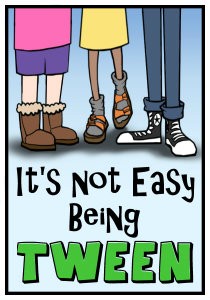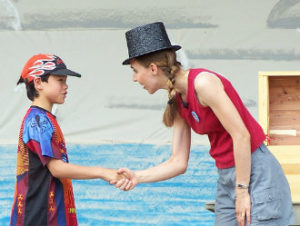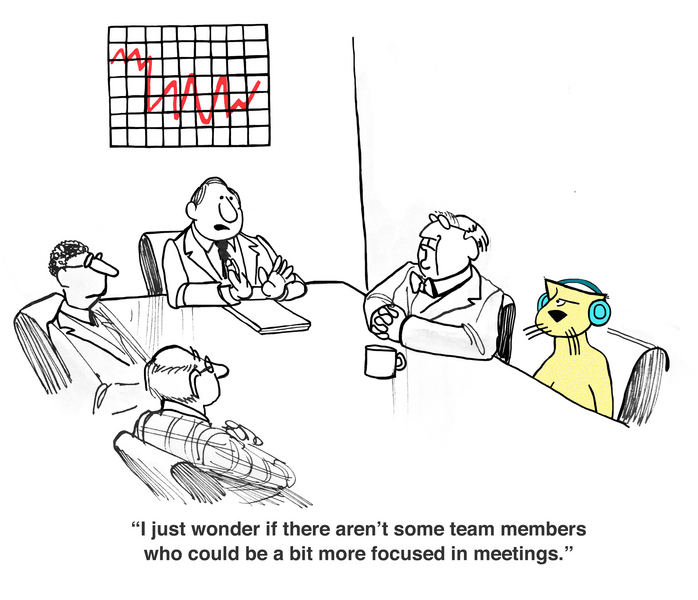Ideas For a Do-It-Yourself Soft Skills Curriculum
A MiddleWeb Blog

Whether they choose to further their education or enter the workforce immediately, one thing is for certain—they will eventually want to be gainfully employed in a field of their choosing.
In order to be successful, there are certain core competencies all employees will need to acquire. These can be loosely grouped under the umbrella of “soft skills.”
Remembering what we’ve lost
When I was younger, the adults in my life gave me the advice that while it was fine to be a good student, having strong “people skills” (what my grandmother used to call soft skills) was equally important.
My parents embodied the virtues of kindness and generosity. My grandmother shared the importance of having a sense of humor in trying times, my grandfather taught me how to shake hands properly and look people in the eye, my father made me own up to my mistakes, and my siblings and friends taught me how to get along with others.
Because I went to school in the progressive 70s and 80s, my teachers designed learning opportunities that involved these skills plus critical thinking, creativity, and working with our hands. All of these life lessons were not considered frivolous, but an integral part of becoming a grown-up.
Adding another challenge to today’s busy classrooms
Today, because teachers face tremendous pressure to prepare students for standardized testing, these non-academic skills often take a back seat. The problem with this focus on churning out good test takers is that there is a disconnect between what students are experiencing in school and what employers say they want.
If you do an internet search of core competencies desired by employers, you will get thousands of results, but the basic ideas are all the same.
Companies have found that their employees who are most successful have not only strong technical skills needed for their specific profession, but also strong “soft” skills which the Oxford Living Dictionary defines as “personal attributes that enable someone to interact effectively and harmoniously with other people.” This is why it is crucial to incorporate these skills into their everyday school lives.
Happily, this situation seems to be improving as administrators have realized that it is important for students to learn these competencies in school as well as at home. The issue that has emerged is that teaching students these “soft skills” has become yet one more thing to add on to a school’s already packed schedule and a burden to the teachers.
It doesn’t have to be that way. It also doesn’t have to mean the purchase of an expensive canned SEL program. These non-academic skills can be integrated into existing curriculum quite easily.
The following are a few of the many ways I embed the soft skills into my middle grades students’ daily classwork. Many of these involve multiple social skills so you get more bang for your buck. Another great source of information on many of these topics is the new book Teaching Kids to Thrive by Debbie Silver and Dedra A. Stafford.
Communication Skills
Sharing the floor: The majority of the time, my students are seated in groups of four. The first few times they collaborate, I distribute an inexpensive object such as a poker or bingo chip to each student. The chip is their ticket to talk. They put it in the center when they have something to share. They may not speak again until every person in the group has placed their chip in the center and the process then repeats.
Listening skills: I love to do oral directions activities. For example, I give them a blank paper and tell them how to draw something without showing them the final picture. The goal is to get as close as possible to the original. This is a lot of fun.
Speaking skills: My students study argumentative writing. At the end of the year, I have them write and perform a book commercial to convince their peers to read their book.
Having a Positive Attitude

Gratitude: Before Thanksgiving break, I have my students make a list of ten to fifteen things that annoy them. The next day, I share a piece called “Things to Be Thankful For” published in Ann Landers’ Chicago Tribune column on 11/22/01. I have every student turn each of their annoyances into something to be thankful for and write their own “I Am Thankful” piece.
Encouragement: As my students present their Passion Projects to one another, I have them write down a compliment for the presenter. At the end of the presentations, we share these in written form for their peers to keep. I also have them fill out a page of things they admire about their peers at the end of the year. Many kids keep these for years!
Collaboration Skills
My students love to do the group problem solving and team building activities that I have enjoyed for years. I use various activities such as survival scenarios, STEM activities, debates like “What are the 5 most important professions in the world?” and group story writing.
This year, I developed a couple of digital BreakoutEDU games (based on the popular Escape Room concept) that my students played in groups. This was a huge hit and I intend to add more next year.
Critical Thinking
My students love figuring out brain teasers of all kinds. For example, when we study idioms, they solve rebus puzzles based on popular sayings.
Sorting and categorizing games work in every discipline. The act of determining attributes (especially when arguments can be made for more than one answer) is very engaging. Sort animals or plants in science; shapes in geometry; themes in history.
Evaluating internet sources for validity involves many necessary future-ready skills. I often use a “Question of the Day” such as Why do people traditionally mount their horses on the left? (Answer: Most people are right handed. Therefore, men would wear their swords on their left and could not swing their left leg over the right side of the horse.) Then students ask yes or no questions to try to form a hypothesis before I reveal the answer. (These can also make fun research topics.)
Professional Skills
To the greatest extent possible, students should be given ownership of their learning. Project based learning and incorporating choice are both good ways to practice time management, establishing priorities, setting goals, and producing quality work.
Common courtesy matters. Modeling saying please and thank you, apologizing when you’re wrong, refraining from interrupting, moving politely through crowded spaces, and having empathy are ways teachers can reinforce the power of one’s actions.

Being able to follow a dress code, arrive on time, manage their workload and follow directions carefully are skills that mimic what they will experience as they enter the working world.
Practicing leadership by taking turns teaching others, managing a group or developing curricular materials help children gain self-confidence as well as a sense of accomplishment.
Helping Kids Grow
The above are small, but important, ways that school can help students prepare for their adulthood, but they don’t need to add an extra burden to teachers. There are as many ways to help kids grow up as there are children to watch grow. And if you get a chance, it never hurts to teach them how to avoid a “dead-fish” handshake.


































Hi Cheryl!
What a terrific article!! Thanks so much for the shout-out for our new book, Teaching Kids to Thrive! We were honored to have you be a part of that book. You truly “get it” about how to be an effective educator!!
I’m concerned that Speaking Skills is addressed only as an afterthought to your argumentative writing lesson. Speaking skills must be specifically taught just as writing skills are specifically taught. Someone taught punctuation, capitalization, and so on, and kids had lots of practice activities with those before being asked to write an essay. What specific lessons do you offer about the pieces of effective speaking before having the kids “perform” the commercial? Too many educators confuse “I make them speak” with “I taught them how to speak well.” Apologies for seeming harsh, but I am concerned. More about this here: https://goo.gl/AatgBD
Thanks, Debbie.
Erik, I am a huge fan of your work and do teach your PVLEGS techniques (Sandy Otto is a good friend of mine and pointed me to your work). It is not that speaking skills are an afterthought, but I have a limited word count for my articles so I can never share everything I do. :) Rest assured that they receive instruction in speaking prior to public speaking in class. I highly recommend that people look into your PVLEGS work if they want to help students polish their speaking skills. http://pvlegs.com/
Whew! Concern gone. Thanks for the reply, thanks for valuing speaking skills, and thanks for all you do to improve education!
Thank you for your concepts and for sharing your personal experiences.